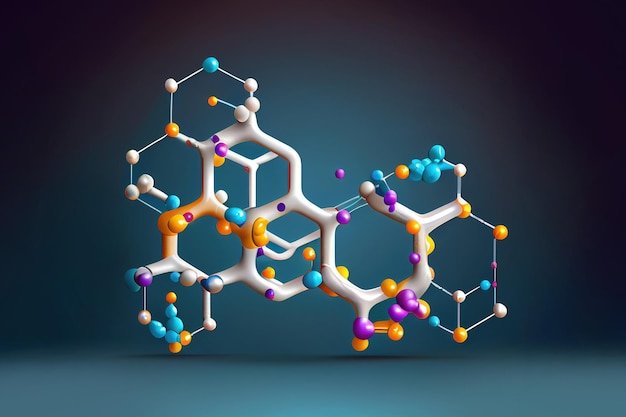Let’s look into Mounjaro vs Trulicity, the erstwhile diabetes management. To put it briefly, the main difference between Mounjaro (Sitagliptin) and Trulicity (Dulaglutide) is their class of medications and mechanism of action. Mounjaro is a DPP-4 inhibitor, while Trulicity is a GLP-1 receptor agonist. Both of these drugs are used to treat type 2 diabetes, but they operate through distinct mechanisms, and understanding their differences is essential for making informed decisions about treatment options.
Mounjaro vs Trulicity: Introduction
What is Mounjaro?
Mounjaro is a medication classified under the group of dipeptidyl peptidase-4 (DPP-4) inhibitors. It is prescribed primarily for the management of type 2 diabetes, a condition that affects millions of people worldwide. The drug is available in oral form, making it a convenient option for patients who may have difficulty with injections.
How Does Mounjaro Work?
The mechanism of Mounjaro revolves around its ability to inhibit the DPP-4 enzyme. This enzyme is responsible for breaking down incretin hormones in the body. Incretin hormones, such as GLP-1 (glucagon-like peptide-1) and GIP (glucose-dependent insulinotropic polypeptide), play a crucial role in regulating blood sugar levels. By inhibiting the DPP-4 enzyme, Mounjaro increases the concentration of these hormones, leading to enhanced insulin release and reduced glucagon secretion from the pancreas. The net effect is a reduction in blood sugar levels, aiding in the management of diabetes.
Benefits of Mounjaro
Mounjaro offers several benefits in the management of type 2 diabetes:
- Effective Blood Sugar Control: By regulating the levels of incretin hormones, Mounjaro helps achieve better control over blood sugar levels.
- Oral Administration: Mounjaro comes in a pill form, making it easy to administer and convenient for patients to take regularly.
- Lower Risk of Hypoglycemia: Compared to some other diabetes medications, Mounjaro carries a lower risk of causing hypoglycemia (low blood sugar), which can be a critical consideration for certain individuals.
- Combination Therapy: Mounjaro can be used in combination with other diabetes drugs to optimize treatment outcomes for patients.
What is Trulicity?
Trulicity, classified as a glucagon-like peptide-1 receptor agonist (GLP-1 receptor agonist), is another medication commonly prescribed for managing type 2 diabetes. Like Mounjaro, Trulicity is designed to regulate blood sugar levels, but it does so through a different mechanism of action.
How Does Trulicity Work?
Trulicity’s mode of action involves activating the GLP-1 receptors in the pancreas. By doing so, it mimics the effects of the natural GLP-1 hormone and stimulates insulin release in response to food intake. Additionally, Trulicity suppresses glucagon secretion from the pancreas, which helps reduce the amount of glucose released into the bloodstream by the liver.
Benefits of Trulicity
Trulicity offers several advantages in the treatment of type 2 diabetes:
- Effective Blood Sugar Regulation: By targeting GLP-1 receptors, Trulicity helps control blood sugar levels and keeps them within the desired range.
- Convenient Once-Weekly Dosing: Trulicity is administered once a week, offering a more convenient dosing schedule compared to daily medications.
- Weight Loss Potential: For some individuals, Trulicity may lead to modest weight loss, which can be beneficial for overweight or obese patients with diabetes.
- Cardiovascular Benefits: Clinical studies have shown that Trulicity can reduce the risk of cardiovascular events in patients with pre-existing heart conditions.
Mounjaro vs Trulicity: Chemical Composition

Mounjaro
The active pharmaceutical ingredient (API) in Mounjaro is known as Sitagliptin phosphate. It is a member of the dipeptidyl peptidase-4 (DPP-4) inhibitors class of medications. Sitagliptin is chemically described as:
Chemical Name: (2R)-4-oxo-4-[3-(trifluoromethyl)-5,6-dihydro[1,2,4]triazolo[4,3-a]pyrazin-7(8H)-yl]-1-(2,4,5-trifluorophenyl)butan-2-amine phosphate (1:1) hemipentahydrate
Empirical Formula: C16H15F6N5O·H3PO4·2.5H2O
Trulicity
The active pharmaceutical ingredient (API) in Trulicity is known as Dulaglutide. It belongs to the class of glucagon-like peptide-1 receptor agonists (GLP-1 receptor agonists). Dulaglutide is chemically described as:
Chemical Name: [(20S)-21-Amino-20-[2-[[2-[[2-[2-[2-(2-aminoacetyl)aminoacetyl]aminoacetyl]amino]acetyl]amino]acetyl]amino]-17-bromo-3,5,11,15-tetrahydroxy-6-methyl-1-oxo-2,7,8,9,12,14,16,18-octaoxo-1,2-dihydro-10H-tetracen-20-yl]methyl (2-hydroxypropanoate) (salt)
Empirical Formula: C264H402BrN72O78S6
Both Mounjaro and Trulicity are carefully formulated with other excipients and components to ensure their stability, efficacy, and proper administration.
Mounjaro vs Trulicity: A Comparative Analysis
Efficacy
Both Mounjaro and Trulicity have demonstrated efficacy in managing type 2 diabetes and lowering blood sugar levels. However, individual responses to medications can vary, and some patients may respond better to one drug over the other. A healthcare provider can help determine the most suitable option based on the patient’s medical history, lifestyle, and treatment goals.
Dosage and Administration
One of the notable differences between Mounjaro and Trulicity is their dosing frequency. Mounjaro is typically taken once daily, while Trulicity is administered once weekly. For some patients, the once-weekly injection of Trulicity may be more preferable than a daily oral medication.
Cardiovascular Benefits
Trulicity has shown significant cardiovascular benefits in patients with pre-existing heart conditions, reducing the risk of cardiovascular events. While Mounjaro’s cardiovascular effects are also beneficial, the extent of its impact may vary between individuals. This aspect could be a crucial consideration for patients with a history of heart disease.
Cost and Insurance Coverage
The cost of medications can influence a patient’s decision-making process. Both Mounjaro and Trulicity may be covered by insurance, but the extent of coverage may vary. Patients should discuss the cost aspect with their healthcare providers and explore options to ensure access to affordable medications.
Mounjaro vs Trulicity: Side Effects

Mounjaro (DPP-4 Inhibitor)
Mounjaro is generally well-tolerated, but like any medication, it may cause some side effects in certain individuals. Common side effects of Mounjaro include:
- Headache: Some patients may experience mild to moderate headaches as a side effect of the medication.
- Nasopharyngitis: This refers to inflammation of the nose and throat, which can lead to symptoms such as a runny or stuffy nose, sore throat, and sneezing.
- Upper Respiratory Tract Infections: Mounjaro may increase the risk of upper respiratory infections, such as the common cold.
- Hypoglycemia: While Mounjaro itself carries a lower risk of causing hypoglycemia, when used in combination with certain other diabetes medications, it may lead to low blood sugar levels.
It is important to note that not all patients will experience these side effects, and some individuals may have different responses to the medication. If any side effects are experienced, patients should inform their healthcare provider for appropriate guidance.
Trulicity (GLP-1 Receptor Agonist)
Trulicity is generally well-tolerated, but it may also cause some side effects in some patients. Common side effects of Trulicity include:
- Nausea: Nausea is one of the most common side effects associated with Trulicity use. This may occur particularly at the beginning of treatment and often improves with time.
- Diarrhea: Some patients may experience episodes of diarrhea while taking Trulicity.
- Abdominal Pain: Abdominal discomfort or pain can be experienced as a side effect of Trulicity.
- Pancreatitis: While rare, there have been reported cases of pancreatitis, which is inflammation of the pancreas, associated with Trulicity use. Patients should seek medical attention immediately if they experience persistent severe abdominal pain, as this may be a sign of pancreatitis.
It is essential for patients to be aware of these potential side effects and communicate any concerns or adverse reactions to their healthcare provider promptly.
Mounjaro vs Trulicity: Pros and Cons

Mounjaro (Sitagliptin):
Pros
- Effective Blood Sugar Control: Mounjaro, as a dipeptidyl peptidase-4 (DPP-4) inhibitor, effectively lowers blood sugar levels by inhibiting the DPP-4 enzyme, increasing incretin hormones like GLP-1. This helps improve glycemic control in patients with type 2 diabetes.
- Convenient Once-Daily Dosage: Mounjaro is typically taken once daily, making it convenient for patients to adhere to their medication regimen.
- Low Risk of Hypoglycemia: Mounjaro carries a lower risk of causing hypoglycemia compared to some other diabetes medications, making it safer for patients vulnerable to low blood sugar episodes.
- Well-Tolerated: Mounjaro is generally well-tolerated by most patients, with common side effects being mild and manageable.
Cons:
- Limited Weight Loss Benefits: While some patients may experience modest weight loss as a secondary effect, Mounjaro is not specifically indicated or approved for weight loss.
- Potential Side Effects: Although well-tolerated, some patients may experience side effects such as headache, nasopharyngitis, and upper respiratory tract infections.
- Not a Standalone Treatment: Mounjaro is typically prescribed as part of a comprehensive diabetes management plan, including diet, exercise, and other medications if needed.
Trulicity (Dulaglutide):
Pros
- Effective Blood Sugar Control: Trulicity, as a glucagon-like peptide-1 receptor agonist (GLP-1 receptor agonist), helps regulate blood sugar levels by stimulating GLP-1 receptors in the pancreas. This promotes insulin release and reduces glucagon secretion, leading to improved glycemic control in type 2 diabetes patients.
- Potential Weight Loss: Some patients may experience modest weight loss as a side effect of Trulicity. This is beneficial for those with type 2 diabetes who may also struggle with overweight or obesity.
- Once-Weekly Dosage: Trulicity is administered once a week, providing convenience and adherence benefits compared to more frequent dosing.
- Cardiovascular Benefits: Trulicity has shown cardiovascular benefits in clinical trials, reducing the risk of major cardiovascular events in patients with type 2 diabetes and cardiovascular disease.
Cons
- Gastrointestinal Side Effects: Trulicity may cause gastrointestinal side effects, such as nausea, diarrhea, and abdominal pain, especially during the initial weeks of treatment.
- Cost: Trulicity can be relatively expensive, and access to the medication may be limited by insurance coverage or financial considerations.
- Rare Risk of Pancreatitis: While uncommon, Trulicity use has been associated with a risk of pancreatitis. Patients should be aware of the symptoms and seek medical attention if they experience persistent severe abdominal pain.
- Not Suitable for Everyone: Trulicity is not recommended for patients with a personal or family history of medullary thyroid cancer (MTC) or those with a history of multiple endocrine neoplasia syndrome type 2 (MEN 2).
Role in Weight Loss: Mounjaro vs Trulicity

Both Mounjaro and Trulicity are medications primarily used for the management of type 2 diabetes. While they are not specifically indicated as weight loss medications, they may have an impact on weight in some individuals.
Mounjaro’s Role in Weight Loss
Mounjaro, also known as Sitagliptin, is a dipeptidyl peptidase-4 (DPP-4) inhibitor. Its primary function is to help regulate blood sugar levels in individuals with type 2 diabetes by inhibiting the DPP-4 enzyme, which increases the concentration of incretin hormones like GLP-1 (glucagon-like peptide-1). While Mounjaro’s primary goal is to manage blood sugar, some patients may experience weight-related benefits as a secondary effect.
For certain individuals with type 2 diabetes, particularly those who are overweight or obese, better glycemic control achieved through Mounjaro may lead to improved insulin sensitivity. As a result, some patients may experience modest weight loss. However, it is important to note that the weight loss observed with Mounjaro is generally not as significant as that seen with medications specifically approved for weight loss.
Trulicity’s Role in Weight Loss
Trulicity, also known as Dulaglutide, is a glucagon-like peptide-1 receptor agonist (GLP-1 receptor agonist). It is prescribed for the management of type 2 diabetes and operates by stimulating GLP-1 receptors in the pancreas. This action mimics the effects of the natural GLP-1 hormone, leading to increased insulin release and reduced glucagon secretion, both of which contribute to better blood sugar control.
One of the notable side effects of Trulicity is that it may cause some patients to experience modest weight loss. The drug’s action on the GLP-1 receptors may also help suppress appetite, leading to reduced food intake and subsequent weight loss in some individuals. However, it’s important to emphasize that not all patients using Trulicity will experience weight loss, and individual responses to the medication can vary. To target weight loss, proper medication must be used and not rely on these drugs solely.
Mounjaro vs Trulicity: Final Verdict
In conclusion, Mounjaro and Trulicity are valuable medications in the management of type 2 diabetes. Mounjaro, a DPP-4 inhibitor, enhances insulin production by inhibiting the DPP-4 enzyme, while Trulicity, a GLP-1 receptor agonist, stimulates insulin release and reduces glucagon levels. Each medication has its unique benefits and considerations, and the choice between them should be made based on individual preferences, tolerances, and healthcare provider recommendations. Patients should have open and informed discussions with their healthcare providers to select the medication that aligns best with their health needs and lifestyle.
[youtube https://www.youtube.com/watch?v=6Y-NN3X0ZC0?si=auFL40Hu1ecO4VCm&w=560&h=315]FAQs
Is Mounjaro and Trulicity the same thing?
No, Mounjaro (Sitagliptin) and Trulicity (Dulaglutide) are not the same. They are different medications used for the management of type 2 diabetes. Mounjaro is a dipeptidyl peptidase-4 (DPP-4) inhibitor, while Trulicity is a glucagon-like peptide-1 receptor agonist (GLP-1 receptor agonist). Both drugs have distinct mechanisms of action and are prescribed based on individual patient needs.
What is better than Trulicity for weight loss?
Several medications are available for weight loss, and the choice depends on individual factors, such as medical history, response to treatment, and tolerability. Some alternatives to Trulicity for weight loss may include other GLP-1 receptor agonists like Ozempic (Semaglutide) or Saxenda (Liraglutide).
What works better than Trulicity?
The effectiveness of medications can vary from person to person. While Trulicity is an effective option for many individuals with type 2 diabetes, other GLP-1 receptor agonists like Ozempic and Saxenda may be equally effective or better for certain individuals, depending on their specific health needs.
What medication is comparable to Mounjaro?
Mounjaro, also known as Sitagliptin, is part of the dipeptidyl peptidase-4 (DPP-4) inhibitors class. Other DPP-4 inhibitors that are comparable to Mounjaro include Januvia (Sitagliptin), Onglyza (Saxagliptin), and Tradjenta (Linagliptin).
Why is Mounjaro not covered by insurance?
The coverage of medications by insurance plans can vary and depends on the specific insurance provider and the individual’s plan. Some insurance plans may cover Mounjaro, while others may have specific formulary restrictions or preferred alternatives for diabetes management.
What is a natural alternative to Mounjaro?
There is no direct natural alternative to Mounjaro, as it is a synthetic medication used to manage type 2 diabetes. However, some natural approaches to support diabetes management include a balanced diet, regular exercise, weight management, and stress reduction.
Which is better Ozempic or Mounjaro?
The choice between Ozempic (Semaglutide) and Mounjaro (Sitagliptin) depends on individual patient needs, response to treatment, and healthcare provider recommendations. Both medications are effective in managing type 2 diabetes, but their mechanisms of action and side effect profiles may differ.
How to get Mounjaro for weight loss?
Mounjaro (Sitagliptin) is primarily prescribed for the management of type 2 diabetes and not specifically for weight loss. If weight loss is a goal, patients should discuss appropriate medications and lifestyle changes with their healthcare provider.
What are the side effects of Mounjaro?
Common side effects of Mounjaro (Sitagliptin) may include headache, nasopharyngitis, upper respiratory tract infections, and, in some cases, hypoglycemia when used with certain other diabetes medications. Individual responses to the medication can vary, and patients should report any concerning side effects to their healthcare provider.
What is the downside of Trulicity?
While Trulicity (Dulaglutide) is generally well-tolerated, some patients may experience side effects such as nausea, diarrhea, abdominal pain, and, rarely, pancreatitis. It is essential for patients to be aware of these potential side effects and communicate any concerns to their healthcare provider.
How expensive is Mounjaro?
The cost of Mounjaro (Sitagliptin) can vary based on factors such as the patient’s location, insurance coverage, and the pharmacy where it is purchased. Patients are encouraged to check with their local pharmacies or insurance providers for specific pricing information.
Is Mounjaro approved for weight loss?
No, Mounjaro (Sitagliptin) is not approved for weight loss. Its primary indication is the management of type 2 diabetes.
How quickly do you lose weight on Mounjaro?
Weight loss on Mounjaro (Sitagliptin) can vary significantly among individuals and may not be a significant effect for all patients. Weight management results are influenced by various factors, including diet, exercise, and individual response to the medication.
What’s better than Mounjaro for weight loss?
For weight loss, healthcare providers may consider other medications specifically approved for this purpose, such as Saxenda (Liraglutide) or other approaches that combine lifestyle changes, diet, and exercise.
Does Mounjaro speed up metabolism?
Mounjaro (Sitagliptin) does not directly speed up metabolism. Its primary mechanism of action is to help regulate blood sugar levels by inhibiting the DPP-4 enzyme. Any potential effect on metabolism is secondary to its primary function in diabetes management.
References
- Centers for Disease Control and Prevention (CDC)
- American Diabetes Association (ADA)
- National Institute of Diabetes and Digestive and Kidney Diseases (NIDDK)


